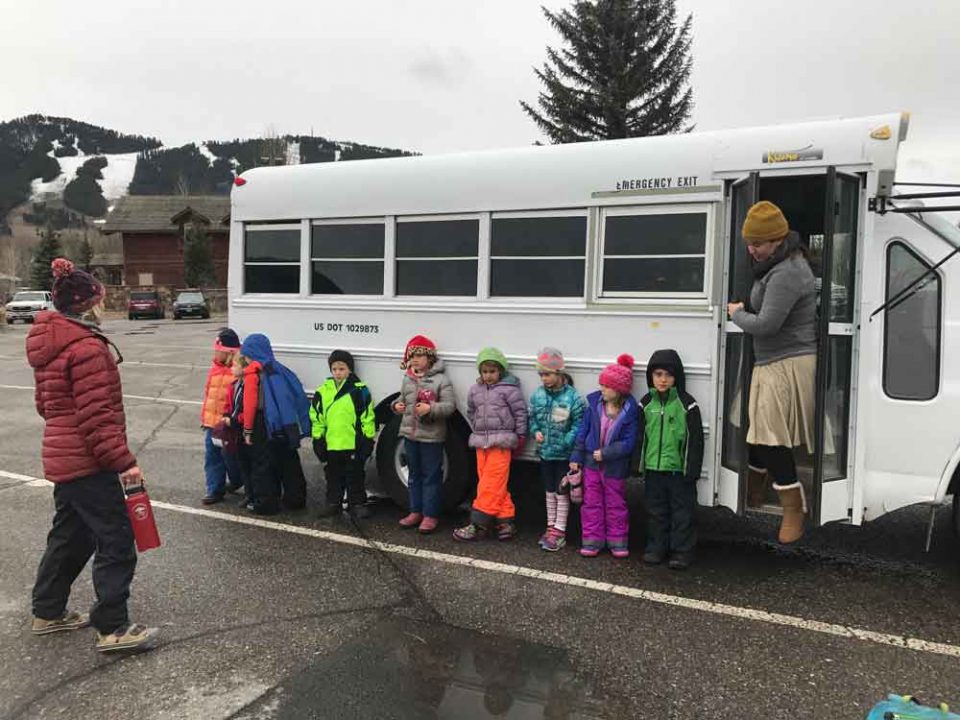“Goose Park” is the name affectionately given to the Murie Family Park outside of the Greater Yellowstone Visitor Center by the Journeys School kindergarten and first grade class. Over the past few weeks I’ve had a variety of experiences with schools visiting Teton Science Schools (TSS), and my visit to Murie Family Park further exemplifies the teaching embodied by TSS educators. Every week the kindergarten and first grade class go on a journey to learn about their local community. This was incredible to me, as my large elementary school in suburban Massachusetts only took a couple of trips a year to dimly lit museums. When I explained this to Revi, a first grader at Journeys, she stared at me in astonishment.“You should’ve come here!” she exclaimed.
I was apprehensive as we loaded into the little bus that would take us into town; in my experience, elementary school trips quickly descended into chaos and rarely yielded further academic understanding. To my surprise, the mechanical doors slid open, the students silently lined up next to the bus and then were reminded of their three Ts: Treat everyone with respect, Try hard, and Take responsibility.

This journey was clearly much more than a way for the kids to expend energy and play; going out into the Jackson Hole community as representatives for the Journey School gave them a sense of personal responsibility to the school and to others. Seeing themselves as accountable for their actions and the actions of those around them would instill important values on these kindergarteners and first graders that they would carry throughout their lives.
As they walked into the visitor center, the students stared up at a big bronze bear statue and buzzed with anticipation for what was next. Inside, they were thrilled to discover a herd of taxidermied elk walking next to them as they moved through the museum. The class began to filter into a small, dark movie room, isolated from the rest of the museum. I looked on in awe as they sat, completely engaged, for twenty minutes, and watched the seasons pass through the Greater Yellowstone Ecosystem on the screen. They listened as the narrator explained how animals adapted throughout the year, completely curious to learn about the area surrounding their local community.

I can trace my connection to Grand Teton National Park back to a variety of places: Granite Canyon, Teton Science Schools’ Kelly Campus, the Laurance S. Rockefeller Visitors’ Center, and many more. When I remember Jackson Hole, I think of the time I spent engaged with the Jackson community and how I reached an understanding of my surroundings. One of the principles of a Teton Science School education is connecting to place. By fostering connection to place, students gain empathy, become stewards of their local communities, and perhaps even develop a profound connection to their surroundings. Outside of the Visitors’ Center, in the middle of Murie Family Park, I walked towards a group of students and teachers as they watched a flock of canadian geese far in the distance. “Anders, tell DJ why you’re not approaching the geese,” Molly, the kindergarten teacher prompted one of the students.
“We don’t want them to go into the road,” Anders explained before turning back to his classmates.
While this seemed like a small action, this was, to me, the essence of place-based education. These students actively engaged with their community and gained a deeper understanding of their place.


